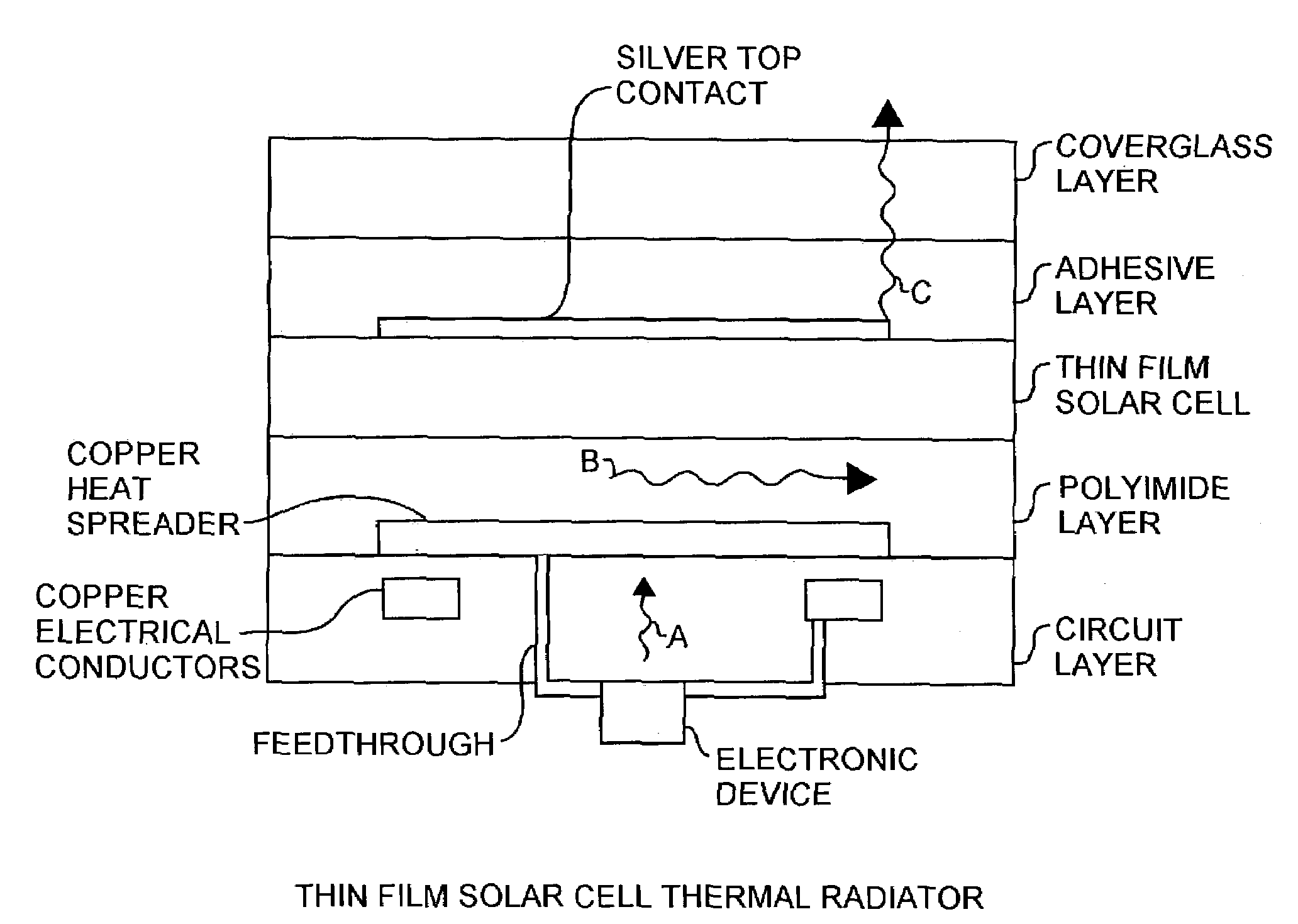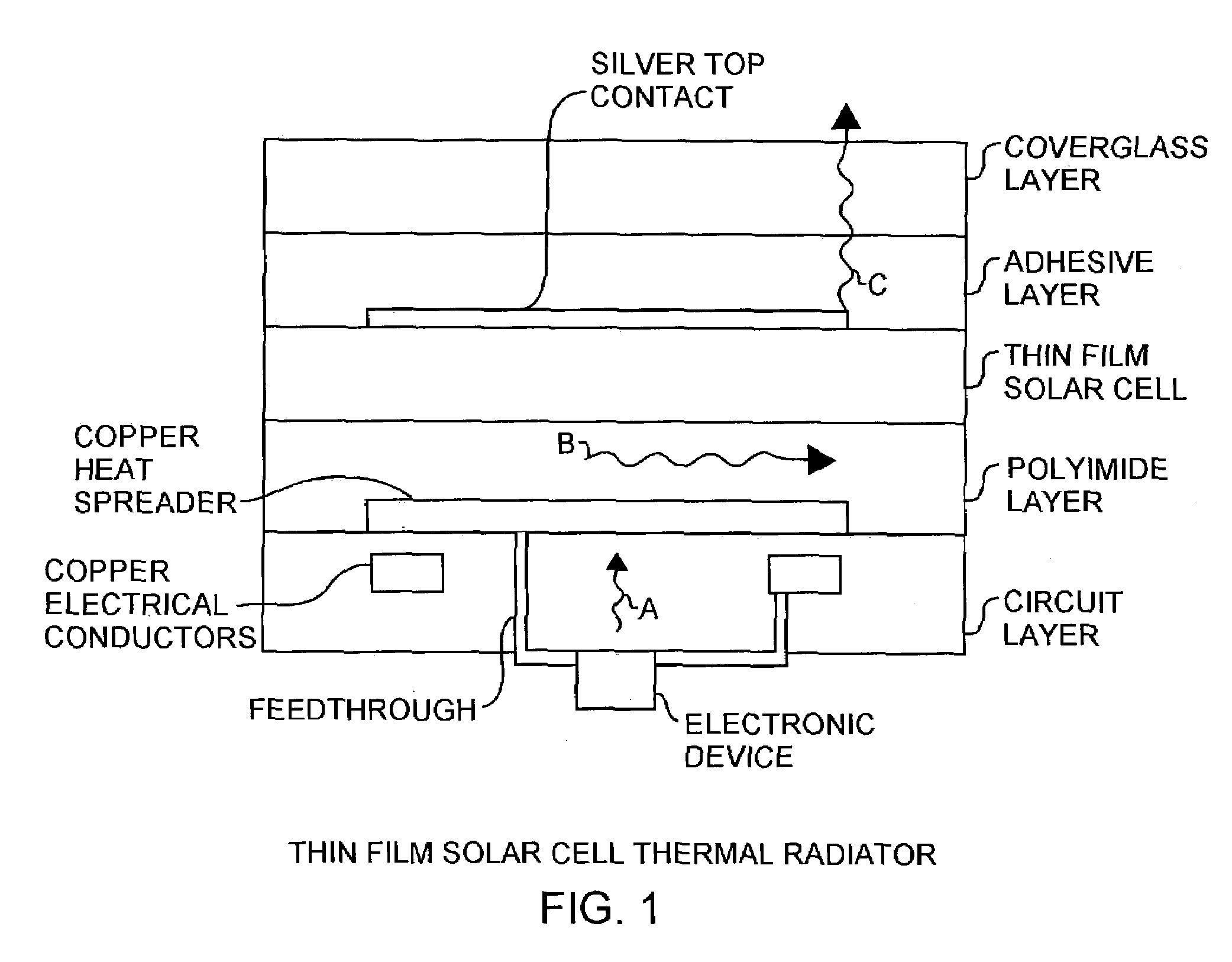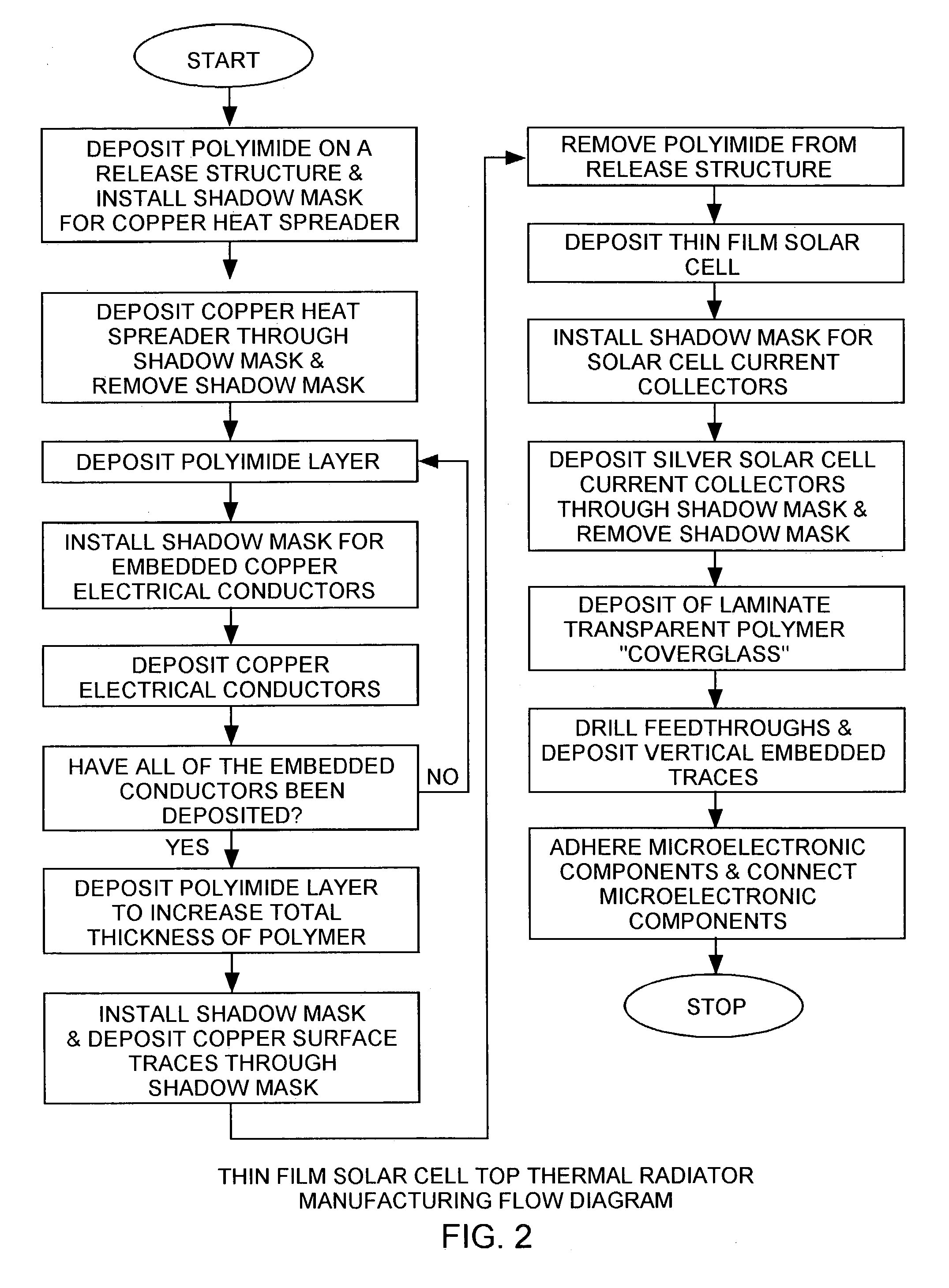Thin film solar cell thermal radiator
a solar cell and thermal radiator technology, applied in the field of thin film solar cells and heat radiators, can solve the problems of obstructing thermal transmission through the solar cell, obstructing the integration of solar power modules, and limited amount of additional thermal energy that can be rejected from thin film solar cells that have mounted active heat producing components, etc., to achieve efficient radiation of waste heat and waste heat
- Summary
- Abstract
- Description
- Claims
- Application Information
AI Technical Summary
Benefits of technology
Problems solved by technology
Method used
Image
Examples
Embodiment Construction
[0011]An embodiment of the invention is described with reference to the figures using reference designations as shown in the figures. Referring to FIG. 1, a thin film solar cell thermal radiator configuration a silver top contact is shown presenting a conventional thin film solar cell. The silver top contact is reflective and functions as a thermal barrier. An adhesive layer is used to secure a coverglass layer over the thin film solar cell. A copper heat spreader is disposed in a polyimide layer. A circuit layer on the polyimide layer has necessary conductors for routing power and signals through feedthroughs to an electronic device generating waste heat. The circuit layer and polyimide layer function as a flexible printed circuit for supporting the thin film solar cell. The flexible printed circuit would be mounted on the back of the thin film solar cell over the copper heat spreader. The copper heat spreader is deposited on the back of the polyimide layer that functions as a depo...
PUM
 Login to View More
Login to View More Abstract
Description
Claims
Application Information
 Login to View More
Login to View More - R&D
- Intellectual Property
- Life Sciences
- Materials
- Tech Scout
- Unparalleled Data Quality
- Higher Quality Content
- 60% Fewer Hallucinations
Browse by: Latest US Patents, China's latest patents, Technical Efficacy Thesaurus, Application Domain, Technology Topic, Popular Technical Reports.
© 2025 PatSnap. All rights reserved.Legal|Privacy policy|Modern Slavery Act Transparency Statement|Sitemap|About US| Contact US: help@patsnap.com



